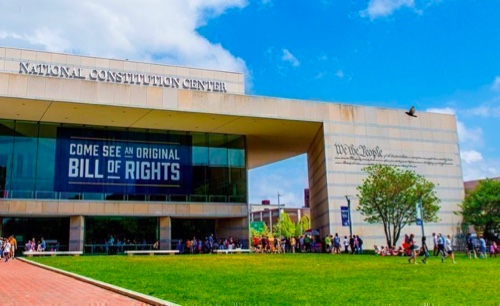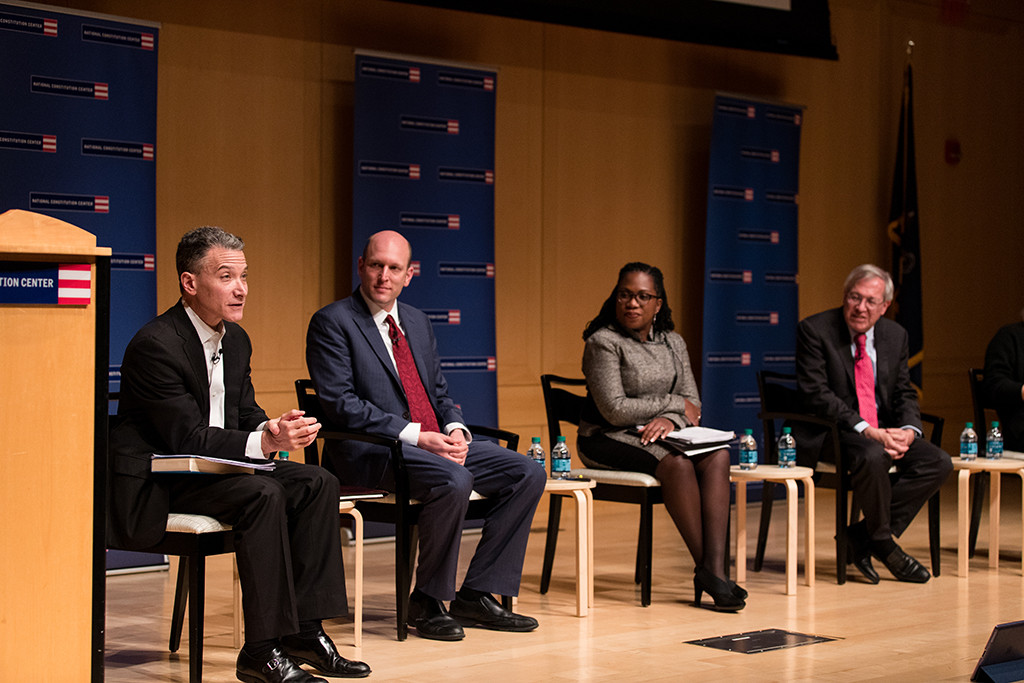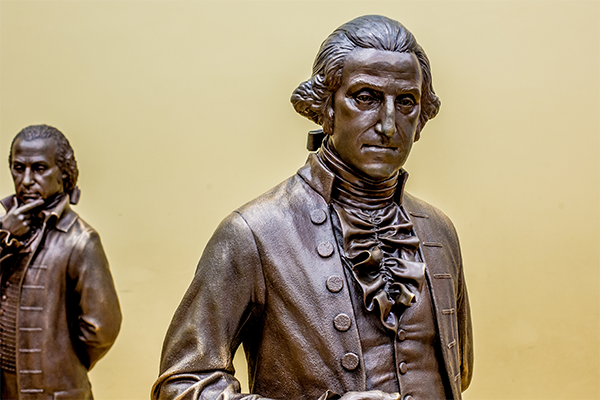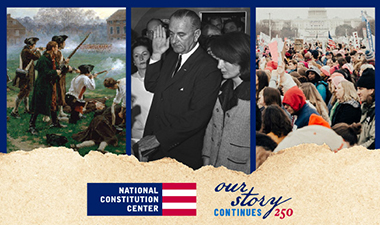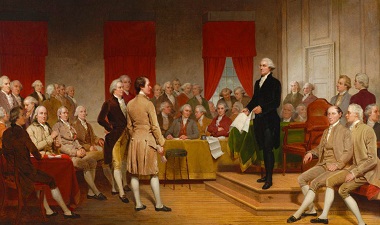President Donald Trump’s recent statements accusing six Democratic lawmakers of making “seditious” comments to military and intelligence community members has ignited a debate about free speech and the constitutional obligations of those in service of our country.
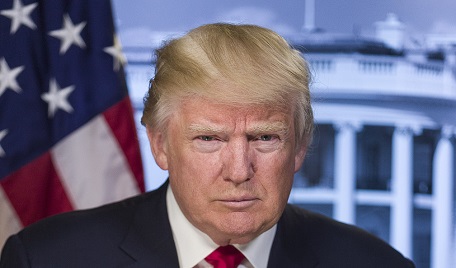 On Thursday, the group of lawmakers, all former members of those communities, posted an online video that urged their former colleagues to consider the constitutionality of orders given them by the Trump administration if they believe the orders to be unlawful.
On Thursday, the group of lawmakers, all former members of those communities, posted an online video that urged their former colleagues to consider the constitutionality of orders given them by the Trump administration if they believe the orders to be unlawful.
“No one has to carry out orders that violate the law or our Constitution,” the group said in the video. “This administration is pitting our uniformed military and intelligence community professionals against American citizens,” they stated. "Like us, you all swore an oath to protect and defend this Constitution. Right now, the threats to our Constitution aren’t just coming from abroad but from right here at home.”
In his online responses, President Trump called the statements “SEDITIOUS BEHAVIOR” in three separate posts. He also claimed, “Each one of these traitors to our Country should be ARRESTED AND PUT ON TRIAL,” and that seditious behavior was “punishable by DEATH!”
White House spokesperson Karoline Leavitt later clarified that Trump was not calling for the execution of the lawmakers, that the administration’s orders were lawful, and she believed the lawmakers were encouraging current service members to defy the chain of command.
The Constitution on Treason and Sedition
The subsequent frenzy of media coverage and fact checking after the exchanges raised several questions about the context of Trump’s statements, and comments from the group that includes two senators, Elissa Slotkin and Mark Kelly, and four members of the House of Representatives, Chris Deluzio, Maggie Goodlander, Chrissy Houlahan, and Jason Crow. All six officials are Democrats.
One primary issue is the most serious question raised by the president about treasonable actions possibly punishable by death. The Constitution’s Article 3, Section 3 defines what is considered treason in the United States: “Treason against the United States, shall consist only in levying War against them, or in adhering to their Enemies, giving them Aid and Comfort.” Under this narrow definition there only have been about 30 treason trials in the United States since 1789. Treason charges also require the testimony of two witnesses or an open confession of the accused in court.
Ethel and Julius Rosenberg were the last people in the U.S. involved in a treason-related trial to be convicted, sentenced to death, and then executed. The Rosenbergs were charged with espionage conspiracy under Title 50, U.S. Code, Section 34, also known as the Espionage Act.
The concept of sedition has an equally long constitutional history. In October 1799, President John Adams and the Federalists jailed the Vermont publisher Matthew Lyon, for criticizing Adams in print and in front of crowds. Lyon also was a sitting member of the House of Representatives when put on trial.
The administration charged Lyon under the 1798 Sedition Act, which sought to suppress dissent and criticism of the government when war with France seemed possible, and Adams’ re-election was unsure. A jury found Lyon guilty on all charges, and he was sentenced to four months in jail and a $1,000 fine. The act expired when Adams left office in 1801.
President Woodrow Wilson pressed in 1918 for a second Sedition Act during World War I as an amendment to the Espionage Act. The amended language made it a crime to “utter, print, write, or publish any disloyal, profane . . . or abusive language” about the United States government or to disagree with its actions overseas. About 2,000 people were indicted under the act and related laws in 1919 and 1920, and 1,000 were convicted before the Harding administration repealed the statutes.
Seditious Conspiracy under Legal Statutes
While the lawmakers’ statements and Trump’s responses may not fit the traditional definitions of treason and sedition, the current debate focuses on several statutes that apply to seditious behavior and the code of conduct for military members. Under 18 U.S. Code § 2384, the Seditious Conspiracy statute, “If two or more persons in any State or Territory” conspire to “oppose by force the authority thereof, or by force to prevent, hinder, or delay the execution of any law of the United States,” they may be subject to fines and imprisonment up to 20 years.
Also, under the Uniform Code of Military Justice, Article 92 states that military members have an obligation to follow lawful orders issued by their commanders. But what constitutes an unlawful order? In a 2020 post on the blog Just Security, Eugene R. Fidell of the Yale School of Law narrowed in on a definition of what could be an unlawful order based on the Manual for Courts-Martial.
Such an order would be one that “a person of ordinary sense and understanding” would know to be unlawful,” Fidell states, citing the precedent of the My Lai massacre trial of Lieutenant William Calley in 1970. Fidell also notes that the Manual for Courts-Martial says any order given by a superior “must not conflict with the statutory or constitutional rights of the person receiving the order.”
Free Speech Arguments
As a practical matter, the vagueness of the statements by the lawmakers and Trump makes any prosecution under the statutes problematic. For example, the video from the six lawmakers does not state which orders from the Trump administration they consider as unlawful. And numerous experts on the subject doubt that military members in the field could have the ability to determine the lawfulness of an order unless it met the narrowness defined in the examples posed by Fidell.
In a hypothetical case posed after the statements by the lawmakers, the legality of the administration’s use of National Guard troops in domestic situations was suggested an implied example from the group. That very question of lawfulness is under consideration in federal appeals courts today.
Another broader question is the free speech rights of the six lawmakers and President Trump, which could protect their statements as the root cause of lawsuits or actions based on the message or content of each speaker. The First Amendment protects political speech strongly; a series of Supreme Court decisions concluding with Brandenburg v. Ohio (1969) held that political speech is protected unless it is “directed to inciting or producing imminent lawless action and is likely to incite or produce such action.”
In a prior dissent from Justice Louis Brandeis in Whitney v. California (1927), he articulated the founders’ understanding of such rights. “They believed that freedom to think as you will and to speak as you think are means indispensable to the discovery and spread of political truth; that, without free speech and assembly, discussion would be futile.”
Scott Bomboy is the editor in chief of the National Constitution Center.
